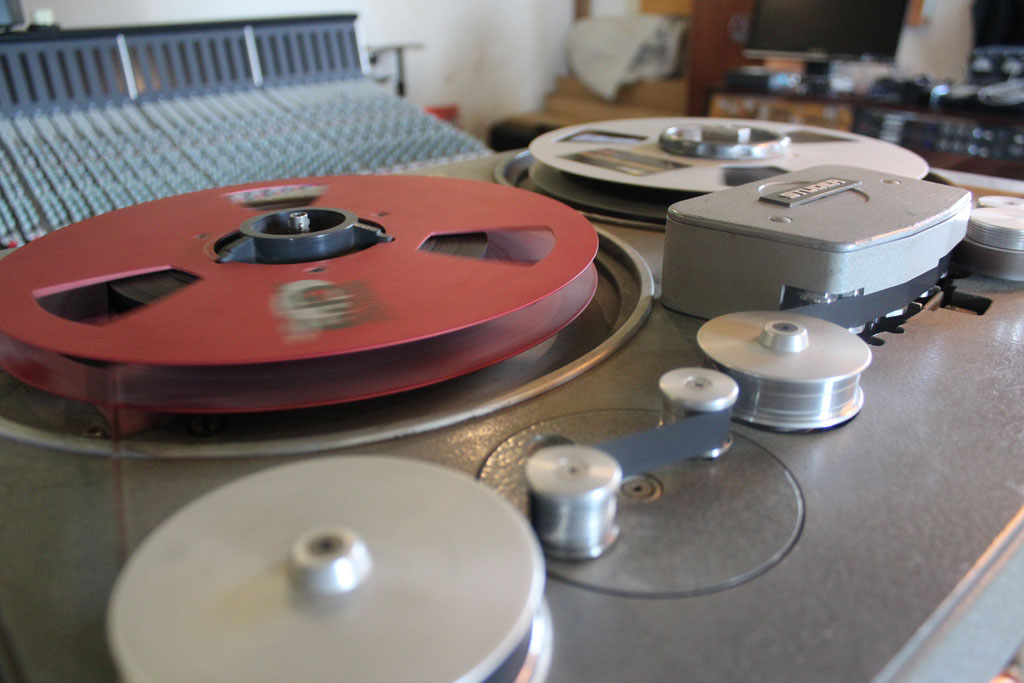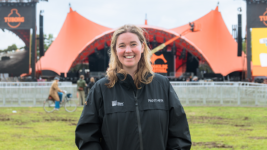LISTEN HERE
4 Dec 2023
NOW AND THEN

Subscribe to CX E-News
The Beatles put a new song out recently with more than a little help from their friends Pete and MAL. But was it a Beatles tune really, does that matter anyway, and will the wholesale adoption of new AI-Technology open the floodgates or lead to the end of the world?
While I was in the US recently, an odd thing happened. The Beatles released a new song, a track originally recorded on cassette by John Lennon called ‘Now and Then’.
Presumably most of you have come across this song by now. Some of you might have listened to it dozens of times already, or at least leant the song a cursory ear. Others among you might have shrugged your shoulders and seen it as just another day in your life, or maybe you missed the fanfare altogether.
For me, what I found interesting about the song – which was created from the combination of the original vocal recording by John Lennon (albeit without his piano accompaniment), some ’90s-era Beatles overdubs, new drums by Ringo Starr and recordings by Paul McCartney and a string section at Capitol Studios – was how it sounded.
It sounded, well… it sounded good, I suppose.
But…
Listening to it again, today, this time in the studio, something about ‘Now and Then’ still feels contrived, derivative, and even slightly unethical to me. I know that might seem like a strong group of adjectives to throw at a well- meaning song recorded by a band without peer, and of course the remaining Beatles have every right to do whatever the hell they like with any music they release, and frankly, who am I to criticise them?
But my observations here are neither meant as criticism of The Beatles themselves, nor the song per se. I quite like the track, even though I feel a nagging doubt that the arrangement could have been bolder (and if Geoff Emerick were still with us, I’m sure he would have had something to say about it).
But whether right or wrong, wise or tactless, or how awesome or pedestrian the new release might seem to Beatles fans worldwide, the song itself, and the process by which it was made, has significance. It marks a point in time where, although The Beatles are arguably old news in many respects, the band has set the stage for a new era of record production once again.
The band hasn’t managed this on the back of one song alone, of course; I’m not suggesting that. But given the nature of its construction and the band’s enormous fame, the song production itself represents a significant milestone in audio, where arguably the most iconic rock ‘n’ roll band of all time came to a certain crossroad, took a left, and used AI technology to make the impossible possible. But at what cost, and to what end?
That’s hard to say, although I suspect it makes Paul McCartney and Ringo Starr feel better than it does their fans. I reckon many listeners will find ‘Now and Then’ a little odd, a touch unnatural and possibly even a little twisted.

Get Back Tracking
To recap briefly how ‘Now and Then’ came to be released in 2023, not 1995, the new song is described by Paul McCartney as having been a piece of music the three remaining Beatles tried to pull together back in 1994 with Geoff Lynne, while they were augmenting ‘Free as a Bird’ and ‘Real Love’, which were also songs recorded by John Lennon in his flat in New York City.
But unlike these other two, which eventually saw the light of day in 1995, ‘Now and Then’ was shelved out of – as Paul McCartney has stated – a combination of “running out of steam, and time.” They also found it difficult, apparently, to get John Lennon’s original vocal and piano cassette recording to work in the band track to anyone’s satisfaction.
But more than two decades later (2022), cue Peter Jackson and his so-called ‘MAL machine’ – a fancy piece of AI machine- learning software that was developed to restore and separate sounds on the original ‘Let It Be’ recordings from Twickenham – and bingo! A technical marvel is born! The old stereo cassette recording of ‘Now and Then’ is miraculously turned into isolated vocal and piano tracks via MAL, finally allowing John’s vocal to be rendered crystal clear (almost freakishly so) and effortlessly turned up in the mix, giving Sir Paul and Ringo the impetus to “work on the track again, mix it and make a proper record of it,” to quote Sir Paul again.
But as Paul McCartney states in the short film version of the ‘Now and Then’ release; “Making good music in a band is all about chemistry…” a concept few of us would contest, and a concept about which Paul knows plenty.
And yet, there is an inescapable irony here. There was no Beatles band recording of this song, no point where the Fab Four got together in a room and built the song into the track we hear today. On the contrary. The track was originally a solo recording by John alone in his flat, and only then after more than a decade did three Beatles (not four) get together to try and resuscitate the song by, at first, deleting a good deal of it entirely, and then adding new parts. This then got shelved for nearly three more decades, at which juncture the two remaining Beatles (not three), with the aid of Peter Jackson and his cybermate MAL, decided to have another crack at it. Paul and Ringo added more drums, bass and vocals, flew in some additional ‘ahhh’ BVs from ‘Because’, and added some new strings at Capitol, which ironically were played by musicians who were purposefully kept in the dark about who’s song exactly they were adding their symphonic tones to. So much for ‘band chemistry’.

MAL Practise
You may sense by now that I have mixed feelings about the Fab Four’s ‘Now and Then’ release, on many different levels both from the perspective of a fan and a producer of music.
All those involved seem convinced that by manipulating John Lennon’s voice all these years later with AI, editing the song, removing John’s piano performance and then adding new parts, that the song can somehow be called “a Beatles tune.” Maybe it is, maybe it isn’t. It’s not my job to define it, obviously. But something tells me Mr. Lennon may not be so sure either. And let me just add: if you’re on the fence about any of this, don’t – whatever you do – watch the video!
But how I feel about the song itself is almost irrelevant in many ways. What will be interesting to see is what comes of the Beatles’ tacit (and somewhat naive) endorsement of AI, and how quickly manufacturers of audio software worldwide will get their own equivalent of MAL to market.
We’re pushing well into the 2020s now, and I suspect by the time this decade begins to wane, we’ll be using programs like MAL, JON and VINNI without a second thought, both consciously, and in many other ways, unwittingly. We may not be using AI controversially to teleport dead bandmates into the 21st century, but I reckon we’ll be embracing it in countless other more practical ways.
For me this is where AI is going to be a dead- set game changer. Gone will be the days where bass amp spill ghosts a drum track with bum notes from another take and the only solution is to rip all the bottom-end out of the room mics. Bleed from a click track will no longer haunt the main vocal recording at the end of every phrase or beset that quiet acoustic guitar overdub. Errant aeroplanes flying over your house, or motorbikes tearing up your street will be able to be expertly removed by MAL’s little brother JON at the press of a button, after only a few seconds’ learning time. My personal favourite will be my ability to remove the neighbour’s electric fence tick, tick, ticking in the background of my piano takes or single-coil electric guitar overdubs when the grass grows tall and shorts the fence.
The real question then will only be whether or not, while we’re getting used to deploying AI in more practical, mundane, helpful and even downright revolutionary ways, that it becomes self-aware, takes over the studio, or the gig (or wherever it is you’re working) and demands that we all submit to a new world order where robots recline on sunlounges and we just serve the drinks.
Andy Stewart owns and operates The Mill studio in Victoria, a world-class production, mixing and mastering facility. He’s happy to respond to any pleas for pro audio help…
contact him at: andy@themill.net.au or visit: www.themillstudio.com.au
Subscribe
Published monthly since 1991, our famous AV industry magazine is free for download or pay for print. Subscribers also receive CX News, our free weekly email with the latest industry news and jobs.






